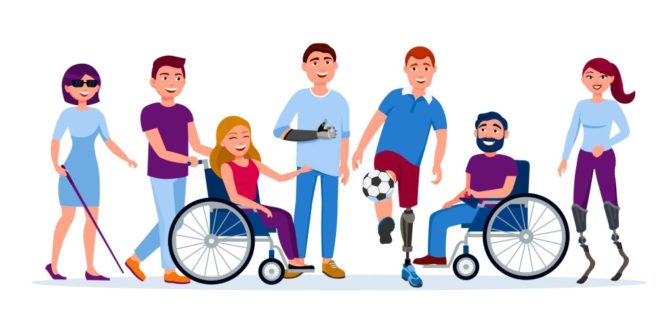Dear readers,
since today is the International Day of People with Disabilities we would like to give a brief outline on disability and physical activity (PA).
What is meant by disability?
According to the International Classification of Functioning, Disability and Health (ICF), disability is an umbrella term referring to any health condition (both mental or physical) which is represented as an impairment leading to activities limitations and participation restrictions. Many types of disabilities exist and the World Health Organization (WHO) published the ICF in 2001 to provide a standard language and universal application.
What are the ICF components?
ICF is characterized by two main components which interact with each other. This is why the ICF is known as a bio-psycho-social model.
- Functioning and disability: including body functions and structures, activities and participation
- Contextual factors: including environmental and personal factors
What is meant by impairment, activities limitations and participation restrictions?
First of all, they are terms defined as the 3 dimensions which represent a person affected by a disability.
- Impairment refers to an absence or significant limitation both structural and functional in a person’s body or mental structure (e.g., loss of a limb or memory)
- Activity limitation means difficulties in the execution of a task or action (e.g., walking)
- Participation restrictions represented in having difficulties to interact with the world around (e.g., engaging in social activities, works activities)
About 15% of the world’s population have some form of disability.
Disability and PA
Although the benefits of a regular PA are known, a multifactorial set of barriers (e.g., environmental, limited facilities, an economic issue, emotional and psychological aspects) remain strong and lead to a lot of people with disabilities to avoid the practice of regular PA. This might be also justified by the chronic conditions of the disease which limit disabled people to be involved in the regular practice of PA.
Staying active is good for everyone. Therefore, all children and adults living with disability should undertake regular PA.
A lot of adapted and varied programmes are made by sports and gym organisations, to increase the practice of PA among people with disabilities.
Thus, all of us need to find the most suited training program which fixes to our needs and since exercise is health we need to move and stay active to preserve our health status.
PA is for everybody. Just find the right one for you and build it day by day.
References
Disability and health. World Health Organization (2018);
International Classification of Functioning, Disability and Health (ICF). World Health Organization (2001);
Edited by
Dott.ssa Francesca Greco and Dott. Luca Rotundo


Commenta con Facebook